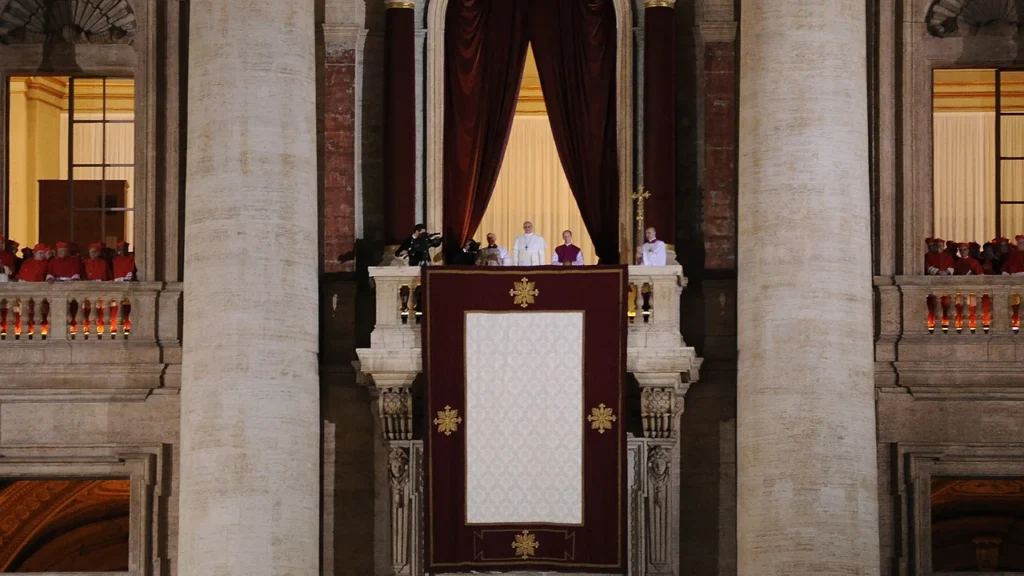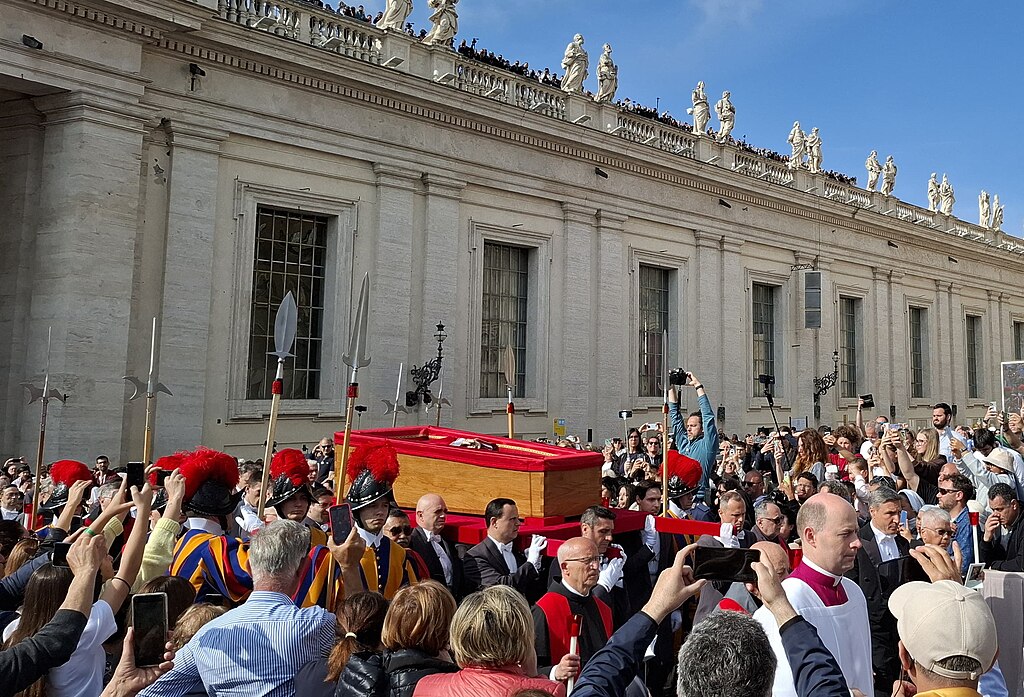If there’s a figure capable of uniting tradition and disruption, humility and courage, it’s Jorge Mario Bergoglio – or, as the world knows him, Pope Francis. His journey, which began in the neighbourhoods of Buenos Aires and culminated in the heart of the Vatican, is a modern epic of faith, challenges, and transformation. Prepare yourself for an in-depth exploration of the life, papacy, and legacy of the 266th Pope of the Catholic Church, who passed away on 21 April 2025, aged 88, after twelve years of one of the most remarkable pontificates in contemporary history.
Birth and family: Italian roots on Argentine soil
Jorge Mario Bergoglio was born on 17 December 1936, in the Flores district of Buenos Aires, Argentina. He was the eldest of five children of Mario Giuseppe Bergoglio, an accountant and former Italian immigrant from Turin, and Regina Maria Sivori, an Argentine of Italian descent. The Bergoglio family, fleeing Mussolini’s fascism, arrived in Argentina in 1929, bringing with them values of hard work, faith, and simplicity.
From a young age, Jorge was close to his grandmother Rosa, who instilled in him the Catholic faith and taught him to pray – an influence he never forgot. The young Bergoglio also inherited a passion for football (a supporter of San Lorenzo), tango, and cooking, learning culinary skills from his mother. His childhood was marked by simplicity, religiosity, and a sense of community typical of Buenos Aires neighbourhoods.
Education, youth, and religious calling
Bergoglio attended Salesian schools and later enrolled at Escuela Técnica Industrial Nº 27 Hipólito Yrigoyen, qualifying as a chemical technician. He worked in a laboratory and even as a doorman and cleaner, experiences that brought him closer to the everyday lives of workers. At 21, he suffered a severe bout of pneumonia and lost part of a lung – an episode that shaped his resilience.

His calling to the priesthood came in almost cinematic fashion: after a casual confession at the church of San José de Flores, he felt drawn to religious life. In 1958, he entered the Jesuit seminary, marking the beginning of a journey that would see him become the first Jesuit Pope in history.
During his formation, he studied humanities in Chile and earned degrees in philosophy and theology at the Colegio de San José in San Miguel, Argentina. He worked as a teacher of literature and psychology, always close to young people and the marginalised.
Religious trajectory: From Jesuit to bishop of Rome
Early steps and rise
After being ordained a priest on 13 December 1969, Bergoglio dedicated himself to the formation of new Jesuits, becoming novice master, provincial consultor, and rector of the Colegio de San José. In 1973, he was elected provincial superior of the Jesuits in Argentina, leading the order during turbulent times such as the military dictatorship.

After periods as rector, parish priest, and even as a student in Germany, he was appointed auxiliary bishop of Buenos Aires in 1992 by John Paul II, adopting the motto “Miserando atque eligendo”. In 1998, he became archbishop of the Argentine capital, and in 2001 was elevated to cardinal.
Cardinal and pastoral leader
As archbishop and cardinal, Bergoglio stood out for his austere lifestyle, preference for the poor, and advocacy for social justice. He was often seen taking the metro or bus, refusing privileges and drawing close to the most needy. He presided over the Argentine Episcopal Conference and gained international respect for his humble yet firm stance.
Election to the papacy: The pope from the “end of the world”
On 13 March 2013, after Benedict XVI’s resignation, the conclave elected Bergoglio as Pope – the first Latin American, the first Jesuit, and the first to take the name Francis, in honour of Saint Francis of Assisi. His first words, “And now, let us begin this journey: Bishop and people,” already signalled a new era of closeness and simplicity.

The choice of the name Francis was a manifesto: a Church focused on the poor, peace, and care for creation. From the outset, he declined the traditional papal apartments, choosing instead to live in the Casa Santa Marta, and set a less formal tone in the Vatican.
Papacy: Themes, reforms, and travels
Key themes and teachings
Francis’s papacy was marked by accessible language and central themes such as:
- Mercy and Inclusion: He emphasised forgiveness, welcoming the marginalised, and the need for a “field hospital” Church.
- Social Justice and Poverty: He championed the poor, criticised consumerism and unfettered capitalism, and promoted an economy that serves humanity.
- Environment: The encyclical Laudato si’ (2015) became a global reference on integral ecology and environmental responsibility.
- Interreligious Dialogue: He built bridges with other religions, signing the Declaration on Human Fraternity with Islamic leaders and promoting ecumenism.
- Internal Reforms: He restructured the Roman Curia, expanded the role of laypeople and women, abolished pontifical secrecy in cases of sexual abuse, and removed the death penalty from the Catechism.
Documents and writings
Francis published over 120 official documents, including encyclicals, exhortations, and apostolic letters. Among the most significant are:
- Evangelii Gaudium (2013): on the joy of the Gospel.
- Laudato si’ (2015): on care for our common home.
- Amoris Laetitia (2016): on the family.
- Fratelli tutti (2020): on fraternity and social friendship.
Apostolic journeys: A church on the move
Pope Francis was tireless in his global mission. He made 47 apostolic journeys, visiting every inhabited continent, including countries never before visited by a pontiff, such as Iraq, the United Arab Emirates, Timor-Leste, and Mongolia. His visit to the Philippines drew six million people – a historic record. Curiously, he never returned to his homeland, Argentina, after becoming Pope.

Challenges, controversies, and criticism
No pontificate is free from challenges. Francis faced:
- Sexual Abuse Crisis: He made reporting and punishment of omissions mandatory, abolishing pontifical secrecy in such cases.
- Internal Resistance: His reforms and open approach met with opposition from conservative sectors of the Church.
- Social Stances: He advocated for the inclusion of homosexuals, fought hunger and poverty, and maintained traditional doctrine on sensitive issues such as abortion and euthanasia.
- Political Crises: He intervened on behalf of refugees, condemned wars, and was instrumental in the rapprochement between the USA and Cuba.
Death, funeral, and burial: The end of an era
Pope Francis passed away on 21 April 2025, aged 88, from a stroke and heart failure, following respiratory complications. He died in his apartment at Casa Santa Marta, true to the simple lifestyle he always championed.

The funeral was held on 26 April 2025, in St Peter’s Square, after three days of public viewing. The ritual included the sealing of the coffin with medals and a scroll of his achievements, a procession to the Basilica of Santa Maria Maggiore, and burial, followed by daily Masses in his memory. His tomb was opened to public visitation, allowing faithful from around the world to pay their final respects.
Legacy: The pope of the new millennium
Francis’s legacy is vast and multifaceted:
- He transformed the image of the papacy, bringing it closer to the people and the existential peripheries.
- He promoted a more open, synodal, and missionary Church, in constant dialogue with the world.
- He left an indelible mark in defence of the poor, social justice, and the environment.
- He inspired millions with his simplicity, courage, and vision for the future.
As the Pope from the “end of the world”, Francis broke not only geographical barriers but also mental and spiritual ones. His life was – and will remain – an invitation to mercy, fraternity, and hope.



